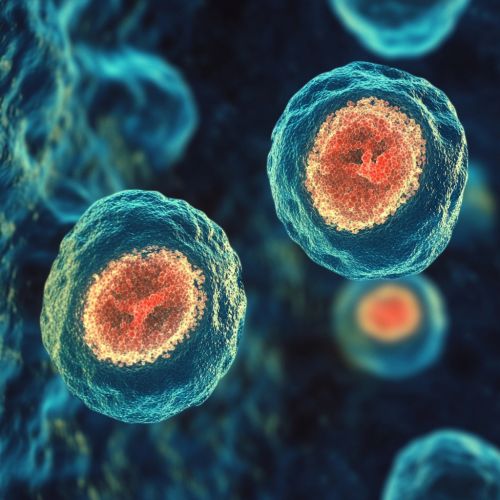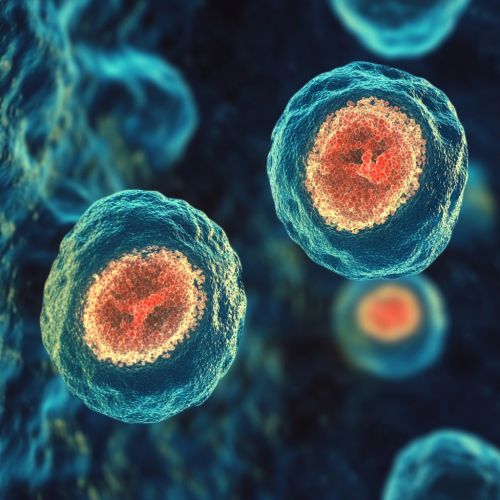Twin Chimerism
Twin Chimerism
Twin chimerism, also known as tetragametic chimerism, is a rare genetic phenomenon where an individual is composed of two genetically distinct cell lines originating from different zygotes. This condition typically arises when two fertilized eggs or early embryos fuse together during the early stages of development, resulting in a single organism with two sets of DNA.


Genetic Mechanism
Twin chimerism occurs due to the fusion of two zygotes, each with its own unique genetic material. This fusion can happen at various stages of embryonic development, leading to different degrees of chimerism. The resulting individual will have two distinct cell lines, each derived from one of the original zygotes. This can result in a mosaic pattern of tissues and organs, where some cells carry the DNA of one zygote, and others carry the DNA of the second zygote.
The phenomenon is a form of chimerism, which broadly refers to the presence of two or more genetically distinct cell populations in one organism. Twin chimerism is specifically associated with the fusion of two embryos, distinguishing it from other forms such as microchimerism, where a smaller number of cells from one individual are present in another.
Clinical Manifestations
The clinical manifestations of twin chimerism can vary widely depending on the distribution of the different cell lines within the body. Some individuals may exhibit no noticeable symptoms, while others may present with a range of physical anomalies or medical conditions. Common manifestations include:
- **Discrepancies in Genetic Testing:** Individuals with twin chimerism may show conflicting genetic results in different tissues. For example, a blood test may reveal one genetic profile, while a skin biopsy may show another.
- **Hermaphroditism:** In some cases, twin chimerism can result in ambiguous genitalia or the presence of both male and female reproductive organs, a condition known as hermaphroditism.
- **Pigmentation Differences:** Variations in skin pigmentation can occur, with patches of skin showing different colors or patterns.
- **Immune System Disorders:** The presence of two distinct immune cell populations can lead to autoimmune disorders or increased susceptibility to infections.
Diagnosis
Diagnosing twin chimerism can be challenging due to the variability in clinical presentation. The following methods are commonly used:
- **Genetic Testing:** Comprehensive genetic testing of multiple tissues can reveal the presence of two distinct genetic profiles. Techniques such as karyotyping, fluorescence in situ hybridization (FISH), and polymerase chain reaction (PCR) are often employed.
- **Histological Examination:** Microscopic examination of tissue samples can identify the presence of different cell lines.
- **Blood Typing:** Discrepancies in blood type between different tissues can be indicative of chimerism.
Case Studies
Several documented cases of twin chimerism have provided valuable insights into the condition. One notable case involved a woman who discovered her twin chimerism during a routine paternity test. Despite being the biological mother of her children, initial genetic testing suggested otherwise due to the presence of two distinct cell lines in her body. Further investigation revealed that she was a chimera, with different tissues carrying different genetic profiles.
Another case involved an individual with ambiguous genitalia, who was later found to have both XX and XY cell lines, indicating the fusion of male and female embryos.
Implications for Organ Transplantation
Twin chimerism has significant implications for organ transplantation. The presence of two distinct genetic profiles can complicate the matching process for donors and recipients. In some cases, chimeric individuals may have a broader range of compatible donors due to their mixed genetic makeup. However, the risk of immune rejection remains a concern, necessitating careful evaluation and monitoring.
Ethical and Legal Considerations
The discovery of twin chimerism raises several ethical and legal questions. Issues related to identity, parentage, and medical decision-making can be complex in chimeric individuals. For example, discrepancies in genetic testing can lead to challenges in establishing biological relationships, which may have legal implications in cases of paternity disputes or inheritance claims.
Additionally, the potential for misdiagnosis or delayed diagnosis highlights the need for increased awareness and understanding of twin chimerism among healthcare professionals. Ethical considerations also extend to the use of genetic information and the privacy of individuals with chimerism.
Research and Future Directions
Ongoing research aims to further elucidate the mechanisms and implications of twin chimerism. Advances in genetic testing and molecular biology are expected to improve diagnostic accuracy and expand our understanding of this condition. Future studies may explore the potential for targeted therapies to address specific medical issues associated with chimerism, as well as the development of guidelines for the management and care of affected individuals.
